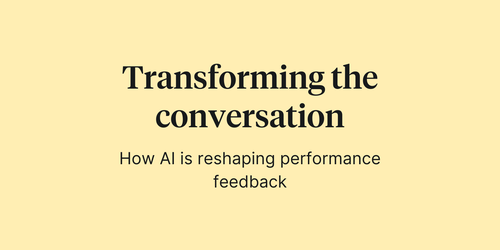
Article

Written by

Founding Scientist, Culture Amp
This blog was updated on April 8, 2022.
People are increasingly turning to crowd-sourcing review websites to gather information before making decisions. Think about how Yelp has transformed the way you look for a new restaurant or service provider.
When it comes to researching a new company to join, Glassdoor is the most well-known source of information and ratings, housing data from over 600,000 companies worldwide. Its website is the second largest job site in the United States, with nearly 67 million unique visitors monthly. Many job seekers look at Glassdoor reviews to get an idea of what a prospective company has to offer.
Thousands of companies use Culture Amp to collect employee feedback data through internal employee surveys every year. Companies can generally capture feedback from 80%-90% of their employees. This means they can gather a representative measure of overall employee experience.
At Culture Amp, we use customer data in the aggregate to form our yearly benchmark analysis. We thought it would be interesting to compare our data with Glassdoor's and see if we could predict Glassdoor rankings from our employee engagement data. We also wanted to see what we could learn if we could use this data to improve our Glassdoor ratings.
We identified 267 companies that had conducted large-scale employee engagement surveys and had at least one Glassdoor review in the last 12 months.
The first question we asked of the data was whether there is a relationship between our engagement index scores and overall Glassdoor ratings. The answer was undoubtedly yes. There appears to be an overall positive relationship. However, the number of reviews has an impact too.
As you look at the chart above (you can explore by rolling over the data), you’ll notice that circles further from the line (representing the line of best fit between the two sets of scores) tend to be based on smaller numbers of reviews.
So, the correlation between engagement and Glassdoor ratings is likely to be stronger the higher the number of reviews. To check this out more stringently, we looked at the correlation statistics as the number of reviews increased.
The relationship quickly picks up from being negative when we have only 1-4 reviews. It starts to scale up more significantly at 100 reviews or more, with a respectable correlation of .69.
To bring this correlation to life, let's look at more direct comparisons for companies scoring higher and lower on Culture Amp engagement scores.
We found that once you know where you stand regarding employee engagement, you begin to know where your Glassdoor score might be heading.
Here’s what the Glassdoor ratings look like across the lowest to highest engagement bands.
We also see a big difference for more engaged organizations when we compare Glassdoor's likelihood to recommend and CEO approval percentages. Below we show these Glassdoor ratings for the least versus the most engaged companies.
Our data suggest that understanding engagement levels in your organization can help you understand how your company will be perceived externally. The depth of a comprehensive employee engagement survey can help you understand what you might focus on to improve your Glassdoor scores.
We can uncover the specific elements impacting engagement and Glassdoor scores by seeking richer feedback on a wider range of workplace experiences (and culture).
The five factors below are what our analyses found had the largest relationship to Glassdoor scores. The dark column represents companies in the top 25% of employee engagement scores, and the coral column represents companies in the lowest 25%.
These results are based on aggregated anonymous data from Culture Amp and publicly available data from Glassdoor. Our findings point to some critical big data trends, like the ability to use internal employee engagement data to predict how your company is perceived externally.
However, every organization has unique factors that affect its people's experiences. If you want to take control of your external reputation, understanding employee engagement and what drives it in your organization will provide you with the information you need to act.
